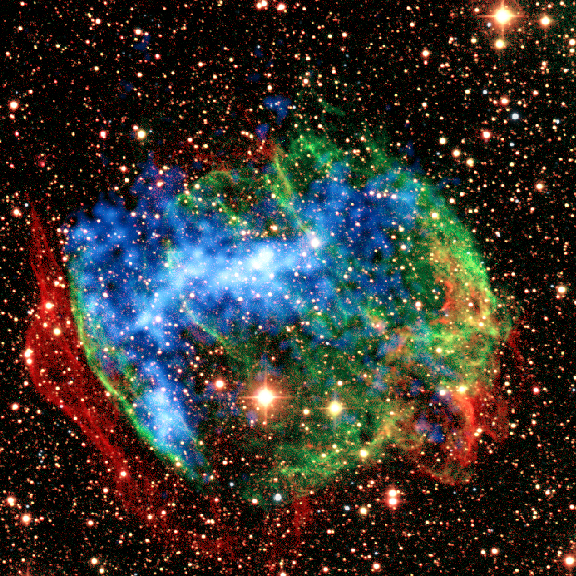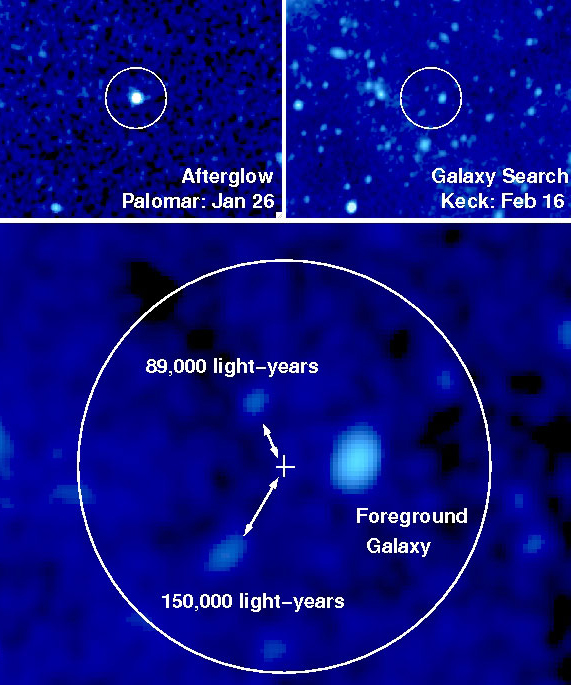
You might not expect that I would devote any time or space on this blog for talking about something that we didn't see. But that non-detection (unlike LCROSS) was pretty exciting.
As Brad Cenko said in his report:
The lack of an optical afterglow, together with the fact that the X-ray column density is consistent with the Galactic value (Krimm et al., GCN 9198), make GRB 090423 an interesting candidate high-redshift event. We encourage observations at longer wavelengths to search for a NIR counterpart.
Translation: This object should be bright, but it wasn't seen in visible light. That means it could be an extremely distant event. So distant, that the expansion of the universe shifted its light completely out of the optical and into the infrared. That was indeed the case.
Telescopes observing the object in the near infrared and radio wavelengths did indeed see the optical afterglow of the event and it is the most distant object ever observed.
How far is it? Just over 13 billion light-years from Earth. GRB 090423 occurred 630 million years after the Big Bang, when the universe was only four percent of its present age of 13.7 billion years. Explosions like this give us a glimpse into the early universe and confirm the idea that massive stars, like the one that blew up creating the gamma-ray burst, existed even back then.





